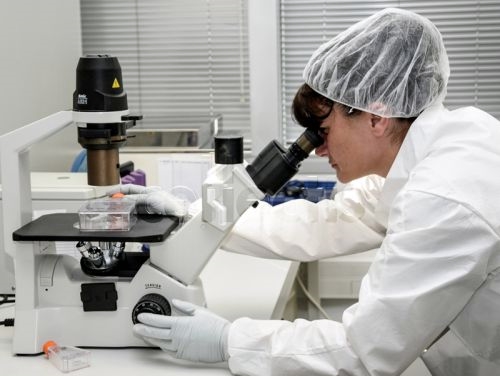23 January 2017. A biotechnology company designed a new type of engineered T-cell from the immune system that more precisely targets tumors and stays away from healthy cells. A team from Cellectis S.A. in New York and Paris describe its discoveries in the 20 January issue of the journal Scientific Reports.
The Cellectis researchers are seeking to improve on initial developments of immune system cells modified in the lab to treat cancer, by breaking through defenses tumors create to prevent the body’s immune system from fighting the disease. The process takes T-cells, white blood cells from the immune system, and reprograms the cells through genetic engineering to find and kill cancer cells. The engineered T-cells become hunter cells, containing a protein known as chimeric antigen receptor that acts like an antibody. These modified chimeric antigen receptor or CAR T-cells are infused into the patient, seeking out and binding to proteins associated with the cancer.
While early clinical trials of CAR T-cell treatments show promise, they also reveal problems with targeting only cancer cells, threatening healthy tissue that results in serious adverse effects leading in some cases to fatalities. The Cellectis team led by its senior scientist Alexandre Juillerat is refining the CAR-T process to make CAR-T treatments more selective, aiming particularly at tumors and their immediate environment. That microevenvironment, as its called, is characterized by low oxygen concentrations called hypoxia that feed tumor growth.
Juillerat and colleagues enhanced CAR T-cell technology by further engineering T-cells to be sensitive to the low oxygen nature of tumors. This sensor-like feature responds to the presence of a protein known as hypoxia-inducible factor 1-alpha found in the low-oxygen tumor environment. The sensor in the engineered CAR-T cell acts like a switch, where in its default state, it ignores healthy tissue. But when confronted with hypoxia-inducible factor 1-alpha, its cancer cell-killing properties are activated.
In proof-of-concept tests in lab cultures, researchers report the CAR T-cells switch on and bind to the target proteins. Also, the lower the oxygen levels in the target tissue, the more binding takes place, and the more tumor cell killing occurs. Yet, in tissues with normal oxygen levels, the CAR T-cells do not respond, or switch back to the default “off” position after encountering tumor cells.
The team believes this cell engineering technology can be expanded into a platform for enhancing CAR T-cells to respond to other types of tumor environments or conditions, even regulating the toxicity of cancer cells when needed.
Cellectis is developing immunotherapies using CAR T-cells based on T-cells from healthy donors, rather than the patient’s own T-cells. The DNA in the donated cells is edited to add chimeric antigen receptors, for infusion into the patient.
Read more:
- Antibody Trials Stopped After Deaths Reported
- Brain Cancer Regression Shown with Engineered T-Cells
- Engineered T-Cells Tested on Metastatic Cancer
- High Leukemia Remissions Reported for Engineered T-Cells
- Engineered T-Cell Trial Halted After Participant Dies
* * *


 RSS - Posts
RSS - Posts
[…] Safer Engineered-Cell Cancer Immunotherapy Designed […]